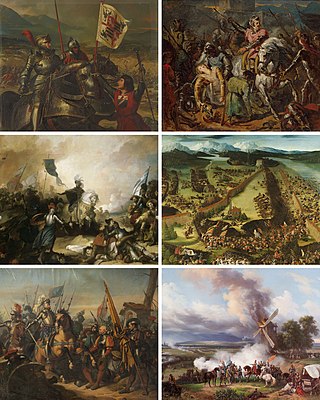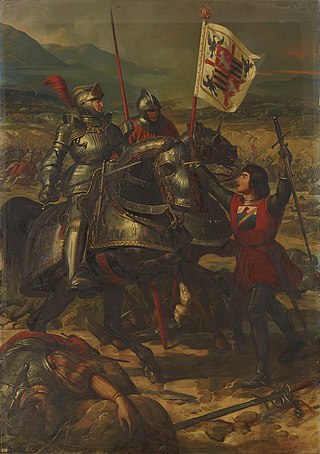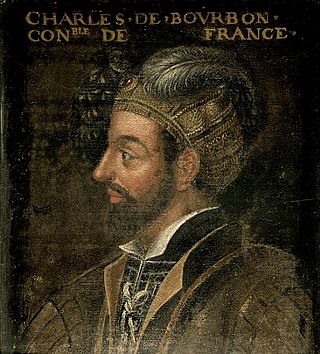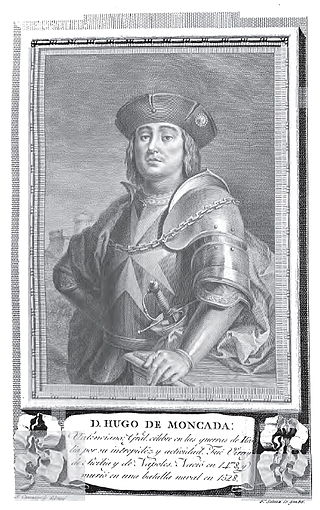
The Italian Wars were a series of conflicts fought between 1494 and 1559, mostly in the Italian Peninsula, but later expanding into Flanders, the Rhineland and Mediterranean Sea. The primary belligerents were the Valois kings of France, and their Habsburg opponents in the Holy Roman Empire and Spain. At different points, various Italian states participated in the war, some on both sides, with limited involvement from England and the Ottoman Empire.

The Battle of Fornovo took place 30 km southwest of the city of Parma on 6 July 1495. It was fought as King Charles VIII of France left Naples upon hearing the news of the grand coalition assembled against him. Despite the numerical advantage of their opponents, the French won the engagement and Charles was able to march his army out of Italy. It was nonetheless devoid of any strategic result as all of their conquests in the Italian Peninsula were abandoned. Fornovo was the first major pitched battle of the Italian Wars.

The Battle of Pavia, fought on the morning of 24 February 1525, was the decisive engagement of the Italian War of 1521–1526 between the Kingdom of France and the Habsburg Empire of Charles V, Holy Roman Emperor as well as ruler of Spain, Austria, the Low Countries, and the Two Sicilies.

Odet de Foix, Vicomte de Lautrec was a French military leader. As Marshal of France, he commanded the campaign to conquer Naples, but died from the bubonic plague in 1528.

Jacques de La Palice was a French nobleman and military officer. He was the lord of Chabannes, La Palice, Pacy, Chauverothe, Bort-le-Comte and Héron. In 1511, he received the title of Grand Master of France.

The Sack of Rome, then part of the Papal States, followed the capture of the city on 6 May 1527 by the mutinous troops of Charles V, Holy Roman Emperor, during his war with the League of Cognac, known as the War of the League of Cognac. Despite being ordered not to storm the city, with Charles V intending to only use the threat of military action to make Pope Clement VII come to his terms, a largely unpaid Imperial army formed by 14,000 Germans, many of them Lutheran, 6,000 Spaniards and some Italian contingents occupied the scarcely defended Rome and began looting, slaying and holding citizens for ransom in excess without any restraint. Clement VII took refuge in Castel Sant'Angelo after the Swiss Guard were annihilated in a delaying rearguard action; he remained there until a ransom was paid to the pillagers.

Charles III, Duke of Bourbon was a French military leader, the count of Montpensier, Clermont and Auvergne, and dauphin of Auvergne from 1501 to 1523, then duke of Bourbon and Auvergne, count of Clermont-en-Beauvaisis, Forez and La Marche, and lord of Beaujeu from 1505 to 1521. He was also the constable of France from 1515 to 1521. Also known as the Constable of Bourbon, he was the last of the great feudal lords to oppose the king of France. He commanded the troops of Holy Roman Emperor Charles V in what became known as the Sack of Rome in 1527, where he was killed.

The War of the League of Cambrai, sometimes known as the War of the Holy League and several other names, was fought from February 1508 to December 1516 as part of the Italian Wars of 1494–1559. The main participants of the war, who fought for its entire duration, were France, the Papal States, and the Republic of Venice; they were joined at various times by nearly every significant power in Western Europe, including Spain, the Holy Roman Empire, England, the Duchy of Milan, the Republic of Florence, the Duchy of Ferrara, and the Swiss.

Bartolomeo d'Alviano was an Italian condottiero and captain who distinguished himself in the defence of the Venetian Republic against the Holy Roman Emperor Maximilian.

The Battle of Novara was a battle of the War of the League of Cambrai fought on 6 June 1513, near Novara, in Northern Italy. A French attacking force was routed by allied Milanese–Swiss troops. As a consequence, France was forced to withdraw entirely from Italy.

The Battle of Bicocca or La Bicocca was fought on 27 April 1522, during the Italian War of 1521–26. A combined French and Venetian force under Odet de Foix, Vicomte de Lautrec, was decisively defeated by an Imperial–Spanish and Papal army under the overall command of Prospero Colonna. Lautrec then withdrew from Lombardy, leaving the Duchy of Milan in Imperial hands.

The First Italian War, or Charles VIII's Italian War, was the opening phase of the Italian Wars. The war pitted Charles VIII of France, who had initial Milanese aid, against the Holy Roman Empire, Spain and an alliance of Italian powers led by Pope Alexander VI, known as the League of Venice.

The Italian Wars of 1499–1504 are divided into two connected, but distinct phases: the Second Italian War (1499–1501), sometimes known as Louis XII's Italian War, and the Third Italian War (1502–1504) or War over Naples. The first phase was fought for control of the Duchy of Milan by an alliance of Louis XII of France and the Republic of Venice against Ludovico Sforza, the second between Louis and Ferdinand II of Aragon for possession of the Kingdom of Naples.

The Italian War of 1521–1526, sometimes known as the Four Years' War, was a part of the Italian Wars. The war pitted Francis I of France and the Republic of Venice against the Holy Roman Emperor Charles V, Henry VIII of England, and the Papal States. It arose from animosity over the election of Charles as Emperor in 1519–1520 and from Pope Leo X's need to ally with Charles against Martin Luther.

The Italian War of 1542–1546 was a conflict late in the Italian Wars, pitting Francis I of France and Suleiman I of the Ottoman Empire against the Holy Roman Emperor Charles V and Henry VIII of England. The course of the war saw extensive fighting in Italy, France, and the Low Countries, as well as attempted invasions of Spain and England. The conflict was inconclusive and ruinously expensive for the major participants.

Hugo de Moncada a.k.a. Ugo de Moncada, was a Spanish political and military leader of the late 15th and early 16th century. He served as General of Ocean and Land, Viceroy of Sicily, 1509–1517, Viceroy of Naples, 1527 - 1528.

The Italian campaign of 1524–1525 was the final significant action of the Italian War of 1521–1526 launched by the French into Northern Italy. Led by Francis I of France, the French attempted to dislodge the Habsburgs from Italy in an attempt to control Italy for themselves. After the French invaded Lombardy, the campaign would then primarily consist of the French attempt to capture the city of Milan. However, after Francis's defeat at the Siege of Pavia, the French were driven out of Italy and Francis was taken prisoner.

The Battle of Capo d'Orso, sometimes known as the Battle of Cava and the Battle of Amalfi, was a naval engagement taking place over two days, on April 28 and April 29, 1528, during the War of the League of Cognac. A French fleet inflicted a crushing defeat on the fleet of the Kingdom of Naples under Spanish command in the Gulf of Salerno, where Spanish forces trying to break the French blockade of the city met the French fleet.

Ludovico Barbiano di Belgiojoso (1488–1530) was an Italian military leader who fought on both sides during the Italian Wars.